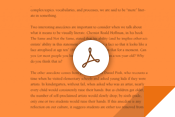A robot to help to enhance older people’s capabilities
The mission of Prytanis is to offer quality social and health care (that is human, professional and comprehensive) and innovation in care for older people. It therefore opted to include a robot in the regular routines of its centre in Plaça d’Europa in L’Hospitalet de Llobregat. To develop and implement this project, Prytanis established a collaboration agreement with Yasyt Robotics, a company that specializes in social robotics and voice assistants.
Description
Prytanis is a social and health care centre with over 30 years’ experience. As part of its mission to improve the quality of life of older people and its eagerness to innovate, it decided to include a robot in the regular routines of its centre in Plaça d’Europa in L’Hospitalet de Llobregat.
In 2020, Prytanis established a collaboration agreement with YASYT Robotics to test the Pepper robot in real conditions at one of its care centres.
The Pepper robot is the result of work to develop and market an innovative, new generation of AI robotic solutions for the cognitive stimulation, support and improvement of the quality of life of older people in Residential Centres for the Elderly.
The following objectives were established in accordance with the stakeholder group:
• Residents: to help in improving some of their main problems such as loneliness, disorientation, and physical and cognitive deterioration.
• Professionals: to increase the quality of care and assume repetitive tasks, thus freeing up professionals to do higher value tasks.
• Family: to encourage the involvement of families by offering participatory tools with which to engage more and be more present.
• Process: a smart use of all the information and data generated in daily processes that were hitherto not managed efficiently.
Work involved use of the “Prototype as a Service” model or, in other words, the development of fast versions that could be tested in real conditions and improved or adapted according to the results observed and the feedback obtained.
Prytanis personnel from the Plaça d’Europa centre were trained to use the robot while training manuals, user instructions and follow-up videos were prepared.
The contribution of Prytanis was essential, not only because it helped to validate the robot in real conditions, but also because it drew from the knowledge and experience of Prytanis’ professionals, which revealed the reality of all the processes from different perspectives (managerial, logistical, medical, psychological, physical, etc.)
For the Pepper robot to adapt to the needs of healthcare centres, numerous co-creation meetings were held with healthcare professionals, who are most familiar with residents’ needs. They provided all their knowledge and experience to identify the functions and contents that could really enhance residents’ capabilities and get their families involved.
Although the average age of the 144 residents is 90 years old, this has not proved an obstacle to their involvement in the digital revolution. The reaction of the older people when interacting with the Pepper robot has been astounding. They have shown it affection and a virtually maternal attitude. They hug it, shake its hand, and may even make jokes or compliment it.
The project is divided into the following phases:
June 2022
Communication module
• 2 cognitive stimulation exercises
• 1 set of group motor stimulation exercises
End of 2022
• Communication module
• 5 cognitive stimulation exercises
• 1 set of group motor stimulation exercises
• Traditions, culture and choreographies module
May 2023
• Communication module
• 8 cognitive stimulation exercises
• 3 sets of motor stimulation exercises
• Traditions, culture and choreographies module
End of 2023
• Incorporation of Life History
On 3 March 2022, a co-creation session involving staff from Prytanis and YASYT Robotics was held to analyse the experience thus far, to identify new lines of development and to generate a list of actions to be performed in the coming months. The most highly valued aspects were how well the robot had been accepted by residents, the considerable engagement of Prytanis staff and the ease of use.
Aspects to be improved included enhancing both the robot’s mobility and its autonomy, and the option of providing daily information to residents.
The benefits brought by the robot as a socializing agent in the life of the residence were also emphasized and some ideas for new areas of functionality were put forward. The application’s structure therefore evolved to yield:
Cognitive stimulation module. . . its extension up to 8 skills
Motor stimulation module. . . expansion of the number of exercise routines
Communication module. . . extending it to communication with mobiles
Mobility and Information Module, including information on lunch and dinner menus,
the day’s activities, weather information, etc.
Choreography Module, introduction of exercise routines associated with music.
Traditions and culture module, with performances by the robot on cultural matters.
Life History Module
Communication module: the virtual visit timetable booking platform has been implemented and families have satisfactorily started to make the first calls. Motor module: both in the Day Centre and the Residence, work is done daily with 5 groups of people who do a set of 22 exercises proposed by the robot.
Implementation
It has now been implemented and is working at full capacity for 25 hours per week.
• 2 cognitive stimulation exercises
• 1 set of group motor stimulation exercises
• - Communication with the family module
Levels of use:
There has been engagement with 56 people.
The level of understanding and acceptance is very high.
The care staff are trained in the robot and encourage its use.
Cognitive module:
36 people currently use the stimulation programme and the robot to determine their level of memory and categorisation.
Needs
• To solve the three major problems of people in Residential Centres for the Elderly: loneliness, disorientation and cognitive deterioration through the cognitive and physical stimulation of residents and by ensuring that the robot really gets to know the person, their reality and their past through their Life History.
• To make greater digital use of all the information and data produced in daily processes with a view to managing them efficiently.
• To involve families by offering participation tools with which they can engage and be more present.
• To increase the quality of care for elderly people with cognitive and affective problems.
Results
Employee satisfaction . 100% of employees value the presence of Robot Pepper at Prytanis.
Customer satisfaction. 100% of the residents value the presence of Robot Pepper at Prytanis.
Files
Published on*** 23 Jun 2022





















